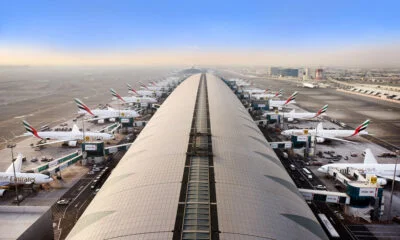News
MEA Reserves 5 Aircraft In Turkey As Conflict Precaution
Flights continue as normal, but Middle East Airlines staff are on standby in case more of the fleet needs to be relocated.

Lebanese carrier Middle East Airlines (MEA) has chosen to relocate 5 of its 24 aircraft to Turkey as hostilities mount in Israel and Gaza.
So far, scheduled flights have not been affected by heightened regional tensions, despite Palestinian militants from Hamas clashing with IDF forces in what is now the deadliest conflict since 2006.

A spokesperson from MEA said the planes had been moved to Istanbul airport over the weekend and would remain there for the foreseeable future. Meanwhile, the remaining 19 aircraft in the fleet are operating normally.
Middle East Airlines staff are also on standby to implement an emergency plan to move the rest of the airliners if the situation worsens.
Also Read: eVTOL Gives Glimpse Into The Future Of Personal Air Travel
“It’s a plan in case of an emergency. God willing, we won’t need it,” explained the MEA spokesperson.
Back in 2006, the Lebanese carrier diverted all its planes from Beirut airport at the start of the month-long 2006 war, which was responsible for the deaths of 1,200 Lebanese citizens. The airport was later bombed, rendering it inoperable.
News
HiFuture Wraps Up Successful GITEX GLOBAL 2024 Appearance
The electronics company wowed audiences at the world’s largest tech event with a range of wearable and smart audio devices.

This year’s GITEX GLOBAL 2024 in Dubai saw a huge number of startups, electronics firms, and innovators from around the globe gather for the tech sector’s largest event of its kind. One company making waves at this year’s expo was Chinese tech group HiFuture, which showcased a range of products with a focus on wearable technology and smart audio.
At the HiFuture booth, the company captivated attendees with cutting-edge smartwatches like the ACTIVE and AURORA, along with a range of powerful wireless speakers, earbuds, and even smart rings. Visitors were eager to check out the sleek new designs on offer and even had the chance to test out some of the products themselves.

Among the highlights were smartwatches combining dual-core processors with customizable options. The devices blended style and technology, offering health monitoring capabilities, personalized watch faces, and advanced AI-driven functionalities, giving attendees a taste of the future of wearable technology.
On the audio front, HiFuture’s wireless speakers left a lasting impression, offering rich, immersive sound in compact, portable designs. These speakers cater to both intimate gatherings and larger celebrations, offering versatility for users. Meanwhile, the company also showed off its Syntra AI technology, which it claims “revolutionizes health and fitness tracking by combining advanced optical sensors with intelligent algorithms for precise, real-time insights”.
Also Read: How (And Why) To Start A Tech Business In Dubai
The presence of HiFuture’s leadership team at GITEX 2024 underscored the importance of this event for the company, with CEO Levin Liu leading a team of executives, all keen to engage with attendees and offer insights into HiFuture’s vision, product development process, and future direction.
Overall, it seems that GITEX GLOBAL 2024 has been a rewarding experience for HiFuture. The enthusiasm and curiosity of attendees shown to the company’s diverse range of products was obvious, with the HiFuture team leaving on a high note and clearly excited and motivated by the event.




























